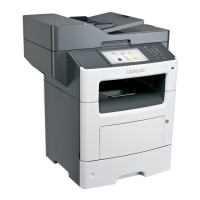General information
Paper and label industry
The paper and label industry includes manufacturers, converters, and distributors.
• Manufacturers produce the base stock. If the base is for labels, then manufacturers may ship it on large rolls or in
a cut‑sheet form.
• Converters take the base stock and convert it into cut‑sheet products. Converters may work from rolls with or
without the adhesive applied. They may also take a base stock and convert it to meet their customers' specifications.
The conversion process includes, but is not limited to, cutting the stock to size, perforating the stock, die‑cutting,
and applying inks and topcoats. Converters work with their customers to convert the base material into a cut‑sheet
product designed for use in laser printers.
• Distributors are generally the direct link to the customer.
As needs and prices change, distributors may work with different converters and converters may work with different
manufacturers. Most businesses follow accepted industry conventions, but specifications, standards, formulations, and
processes may vary with time or with different companies.
As a result, labels or paper that worked well in the past may suddenly create printing problems because of a change in
material or process.
Some large businesses perform all three functions, from manufacturing to distribution. These companies may offer
greater expertise and product consistency than companies that concentrate on one facet of the process.
Printing volumes
Printing numerous sheets of card stock or labels in a short period of time can create printing problems. Continuous
printing on labels, for example, may result in more frequent service calls. The glue on the labels can be squeezed out
by the rollers in the printer and contaminate other printer parts. Most labels and card stock have cuts or perforations
that can be abrasive if not ironed or flattened.
Special media, in general, have rough coatings and are thicker.
Proper printer maintenance can help you avoid these problems. For information about maintaining your printer, see
“Maintenance procedures” on page 14.
Testing print material
Consider the following factors when choosing print materials:
• Physical characteristics of the base stock and the manufacturing processes, which are dependent on the vendor,
may change over time.
• The quality of print materials can also affect printer reliability and downtime. Using materials from converters or
vendors who are unfamiliar with laser printing may result in unsatisfactory print quality or other printing problems.
Once a design is finalized, test the print material before placing a large order to avoid costly mistakes.
General information 8

